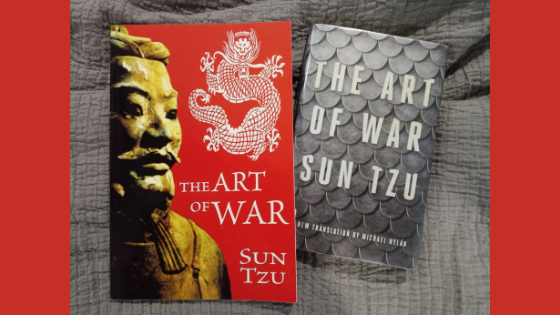|
“It is better to out think the enemy than to fight him.”
I read two translations; one by Lionel Giles (red book) and the other by Michael Nylan. First, I read the translation by Lionel Giles. There are 13 chapters: Chapter one - Laying Plans to Chapter 13 - The Use of Spies. The Art of War was written as a way of military strategy. However, as I continue to read, I realized the value of the content is in the context of each verse. It is guidance on how to think, how to perceive, how to prepare, and how to execute. The applicability of advice to the business world is in the context! The Art of War is dedicated to the power of self-discipline and motivation. The lessons are about rational preparation for today and tomorrow. The lessons are about understanding human nature. It is about the art of fighting, without fighting! The Art of War is straightforward and common sense. To take advantage of The Art of War requires the diligence of the reader to commit its advice. Many are more inclined to quote Sun Tzu than following his instructions. “Strategic disposition means wrestling advantages from the conditions at hand and controlling contingencies. The wise commanders try to feed his army with the enemies’ provisions. If your troops are much inferior, you best elude the enemy. Disorder is born from order; cowardice from courage; weakness from strength. When extending your territory, divide the spoils generously. Because commands cannot be heard in battle, use drums and gongs. Because you cannot really identify one another in a battle use flags and pendants. Drums, gongs, flags, pendants are the means to coordinate men's ears and eyes. To lift an autumn hair is no sign of great strength; to see the sun and moon is no sign of sharp sight; to hear the noise of thunder is no sign of a sharp ear.” Once I had completed reading Lionel’s translation, I read the translation by Michael Nylan. Her book included explanations that I found quite valuable. On a side note, she seems to have allowed President Trump to get into her head. I found it funny for someone who describes the Art of War! Still, I benefited from her insight into the subject. Her use of language is outstanding. Overall, either book is a simple read. The Art of War was written in the 5th century BC. Even though the attributed author is Sun Tzu, this could have been a compilation of many Generals’ wisdom. My recommendation is to read Michael Nylan's translation first and then, use Lionel Giles's translation as a reference.
0 Comments
|
Proudly powered by Weebly

 RSS Feed
RSS Feed